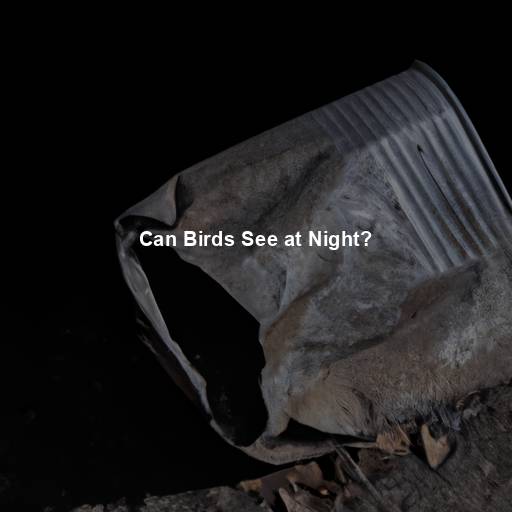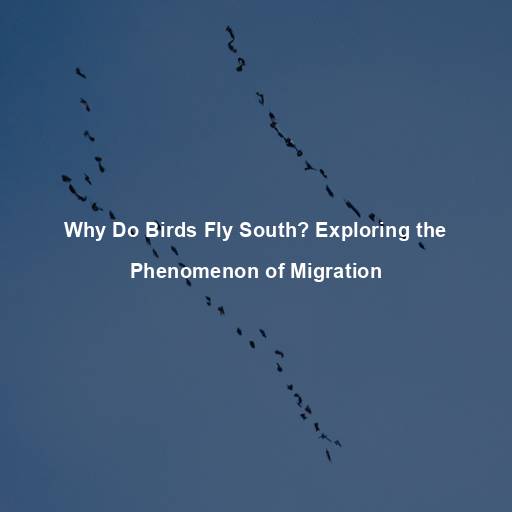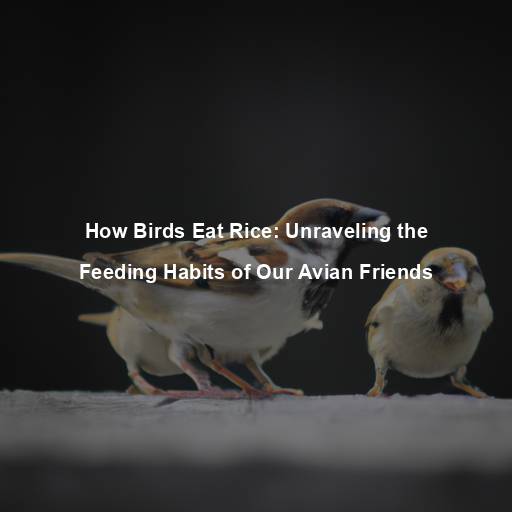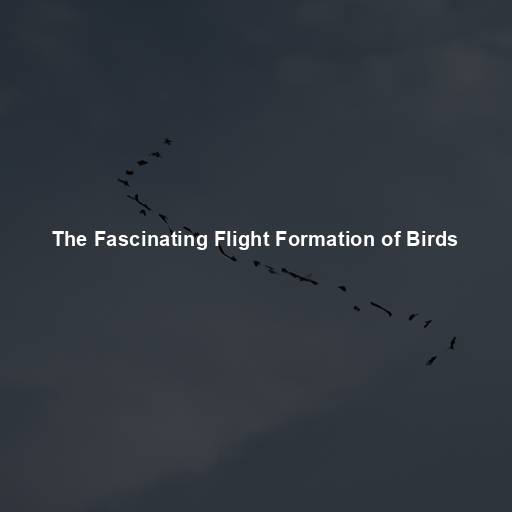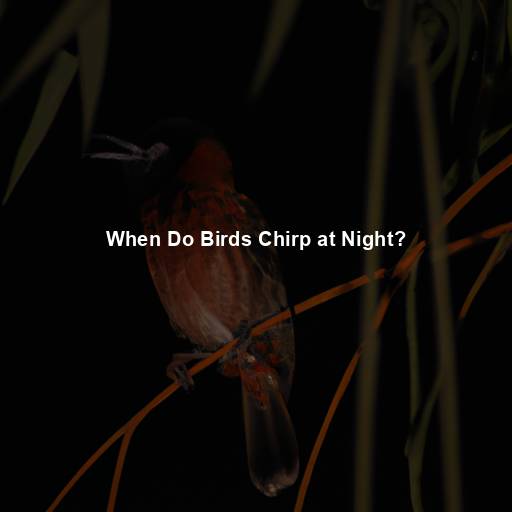Can Birds See at Night?
Last Updated on November 22, 2023 by Evan
Birds are fascinating creatures that captivate our attention with their beautiful colors, melodious songs, and graceful flight. But have you ever wondered if these feathered friends can see in the dark? In this article, we will delve into the intriguing question of whether birds have the ability to see at night. Join us on this avian adventure as we explore the remarkable visual adaptations of our avian companions.
Contents [hide]
- 1 Understanding Bird Vision
- 2 The Mystery of Night Vision
- 3 Adaptations for Low-Light Conditions
- 4 The Limits of Bird Vision
- 5 Appreciating Avian Adaptations
- 6 The Influence of Environmental Factors
- 7 The Diversity of Avian Vision
- 8 The Intricacies of Avian Vision Research
- 9 The Importance of Preserving Avian Habitats
- 10 A Window into the Avian World
- 11 FAQs: Can Birds See at Night?
- 11.1 Can birds see in the dark?
- 11.2 Which birds are known for seeing well in low-light conditions?
- 11.3 Why can’t most birds see well at night?
- 11.4 Are there any exceptions among non-nocturnal birds?
- 11.5 Can birds see in complete darkness?
- 11.6 How do birds compensate for their limited night vision?
- 11.7 Do birds’ eyes glow in the dark?
Understanding Bird Vision
To comprehend the visual capabilities of birds, we must first understand how their eyes differ from ours. While humans possess a single fovea, an area of the retina with the highest concentration of photoreceptor cells responsible for sharp vision, birds have multiple foveae. This unique adaptation allows them to perceive a broader range of visual information simultaneously.
The Nocturnal Adaptation
The mesmerizing world of birds never ceases to surprise us! While it’s well-known that most of our feathered friends prefer the sunny hours, an incredible few have defied convention and embraced the mysterious realm of the night. Marvel at the extraordinary abilities of these nocturnal avian adventurers: the wise owls, the secretive nightjars, and the elegant night herons. Equipped with exceptional visual adaptations, these extraordinary creatures effortlessly navigate through the darkness, defying all odds as they hunt and thrive.
The Mystery of Night Vision
Birds are no strangers to the challenges of navigating through dimly lit environments. However, when the moon casts its eerie glow upon the world and the stars twinkle in the night sky, can birds truly unlock the secrets of the darkness? As perplexing as it may be, the answer is not a simple black-and-white matter. These feathered marvels possess an arsenal of extraordinary visual adaptations, allowing them to defy our expectations.
The Importance of Ambient Light
For our avian friends, ample light plays a crucial role in their ability to gracefully navigate and observe their environment. It’s a fascinating contrast to nocturnal creatures like cats, who possess a nifty feature called the tapetum lucidum that boosts their night vision. Yet, birds, perplexingly, don’t have this handy adaptation, leaving them more dependent on the availability of light for their visual prowess.
Twilight Vision
However, it is important to note that birds have superior twilight vision compared to humans. During the transition periods between day and night, known as crepuscular hours, birds can still detect and perceive objects with greater clarity than we can. This gives them an advantage in activities such as foraging and migration, where visibility is crucial.
Adaptations for Low-Light Conditions
While birds may not possess true night vision, they have developed several adaptations that enhance their ability to detect and respond to visual stimuli in low-light conditions.
Increased Rod Cells
Did you know that birds have a superpower when it comes to vision? It turns out that their retinas are equipped with a higher density of rod cells than us humans. These rod cells play a crucial role in detecting light and motion, especially in low light conditions. This unique adaptation allows birds to navigate their surroundings with increased clarity, even when the sun begins to set.
Enhanced Color Discrimination
It’s time to debunk a common myth: certain bird species possess a remarkable ability to perceive colors even in the dimmest of lighting. This intriguing adaptation comes to life in birds that heavily depend on color-coded signals to communicate and find their ideal partners. Picture this: as the sun rises or sets, male birds proudly flaunt their vibrant plumage, effortlessly captivating the attention of potential mates. Nature surely never fails to surprise us!
Tapetum Lucidum in Nocturnal Birds
In the realm of feathered creatures, there exists a fascinating dichotomy when it comes to nocturnality and vision. Unlike their diurnal counterparts, most birds seem to miss out on a little something called the tapetum lucidum, a marvel of nature found in the eyes of mammals that grants them enhanced night vision. However, amidst this perplexity, there emerges a group of avian enigmas, the nocturnal birds, who possess a modified version of this wondrous adaptation. Yes, dear readers, the owls, those wise and mysterious creatures, harbor within them a tapetum lucidum that reflects light back through their retina, bestowing upon them the extraordinary power of heightened visual sensitivity in the dimmest of environments.
The Limits of Bird Vision
Birds are incredible creatures, able to navigate with impressive ease in dim lighting thanks to their remarkable adaptations. However, even these skilled aviators have their limits, and complete darkness poses a daunting challenge for their vision. Without the luxury of ambient light, birds find themselves plunged into a perplexing world where their ability to navigate and perceive their surroundings is compromised.
The Role of Other Senses
In situations of limited visibility, birds rely on other senses, such as hearing and touch, to compensate for their reduced visual capabilities. Nocturnal birds, in particular, have acute hearing, allowing them to locate prey solely by sound. This multi-modal approach ensures their survival in environments where vision alone may not suffice.
Artificial Lighting and Bird Behavior
In our ever-evolving world, the once tranquil night has undergone a remarkable metamorphosis, showcasing a dazzling display of artificial lighting. Yet, as this luminous tapestry paints the dark canvas, a peculiar conundrum arises for our feathery friends. Birds, just like us, find themselves perplexed amidst this manmade illumination, losing their way during their migratory journeys, grappling with altered feeding habits, and even experiencing peculiar disruptions in their courtship rituals. Such puzzling consequences of artificial lighting on avian vision and behavior continuously captivate researchers, leaving us eagerly awaiting further insights into this intriguing realm.
Appreciating Avian Adaptations
The world of avian vision holds wonders that leave us in awe. While lacking true night vision, birds have developed astonishing adaptations to navigate in low-light environments. Their heightened rod cell density and remarkable color discrimination abilities enable them to flourish during twilight hours and in dimly lit settings. As we delve deeper into the enigma of avian vision, let us appreciate the intricate marvels that make birds such extraordinary and perplexing beings.
In conclusion, while birds may not possess the ability to see in complete darkness, their visual adaptations equip them with the tools to navigate and perceive their environment during twilight hours. Understanding the limits and capabilities of avian vision not only deepens our appreciation for these magnificent creatures but also highlights the importance of preserving their natural habitats and minimizing the impact of artificial lighting. So, the next time you catch a glimpse of a bird silhouetted against the setting sun, take a moment to marvel at their incredible visual adaptations and the wonders of the natural world. ## The Role of Feather Structure
The wondrous world of feathers is a captivating realm where flight and sight converge in a mesmerizing dance. Delicate and intricate, these structures are not only wings of freedom but also gateways to a whole new dimension of visual prowess. Through a fascinating interplay of form and function, feathers unlock a kaleidoscope of lights and hues, empowering birds to effortlessly traverse the skies and unravel the mysteries of their surroundings.
Melanin and Pigment Distribution
The distribution of melanin and pigments in feathers affects how birds perceive and reflect light. Melanin-rich feathers absorb more light, reducing glare and enhancing contrast. This adaptation allows birds to maintain visual clarity even in bright sunlight or low-light conditions. The patterns and colors of feathers also serve as important signals for communication and mate selection.
UV Reflectance
Some bird species have feathers that reflect ultraviolet (UV) light. While humans cannot see UV light, birds possess specialized photoreceptor cells that enable them to perceive this spectrum. The ability to detect UV light provides birds with an additional layer of visual information, allowing them to spot hidden patterns, locate food sources, and recognize potential mates.
The Influence of Environmental Factors
The mesmerizing world of avian vision unfolds beneath the bewitching tapestry of environmental enigmas. Mysterious and curious, the ability of birds to navigate diverse light conditions becomes an enigmatic puzzle at the hands of perplexing environmental factors. Unraveling the intricacies of avian vision demands a deep understanding of the ever-shifting kaleidoscope in which these creatures effortlessly glide. Take flight upon the wings of knowledge and explore the enigmatic symphony that orchestrates the visual marvels of our feathered friends.
Weather and Light Conditions
The interplay between weather and light can have a profound impact on our avian friends’ ability to navigate and perceive their surroundings. The ever-changing dance of cloud cover and atmospheric phenomena introduces an element of unpredictability, causing birds to adapt and adjust their visual cues accordingly. During adverse weather conditions, when visibility is compromised or landmarks appear distorted, birds that heavily rely on visual stimuli may encounter perplexing challenges along their flight paths. These natural intricacies underscore the remarkable resilience and resourcefulness of our feathered companions.
Seasonal Variations
Birds undergo fascinating transformations in their visual abilities, driven by the ebb and flow of seasons. It’s incredible how hormonal fluctuations during breeding season can impact their perception. Moreover, the ever-changing dance of natural light, coupled with varying durations of daylight, influences birds’ needs and alters their visual behavior in perplexing ways.
The Diversity of Avian Vision
Step into the captivating world of avian vision, where birds effortlessly navigate their diverse habitats with an extraordinary display of visual adaptations. Delve into the awe-inspiring tapestry of avian lifestyles and ecological niches, as we unravel the mysteries behind their incredible range of visual capabilities. Brace yourself for a journey of discovery, as we unveil the spellbinding repertoire of fascinating examples that showcase the sheer diversity of bird’s remarkable vision.
Raptor Vision
Raptors, those majestic avian hunters like eagles, hawks, and falcons, have beguiled us with their awe-inspiring ability to see the unseen. Their eyes, oh their eyes, are veritable marvels of nature’s design, honed to perfection for spotting prey from distances that make us dizzy. These feathered furies possess an extraordinary concentration of photoreceptor cells known as cones, the magic behind their keen color vision and razor-sharp acuity. It is this remarkable adaptation that empowers them to spy even the tiniest of morsels and navigate the labyrinthine tapestry of the sky with unfathomable grace and precision.
Waterbird Vision
Waterbirds, including ducks, geese, and herons, have unique visual adaptations that enable them to thrive in aquatic environments. These birds have specialized eyes with a higher number of rod cells, enhancing their ability to see in low-light conditions. Additionally, their eyes are positioned more towards the sides of their heads, providing a wider field of view to detect potential threats both on land and in water.
Hummingbird Vision
It’s fascinating how hummingbirds effortlessly navigate through a tapestry of flowers, almost like tiny avian acrobats. Their dexterity and agility in the air are awe-inspiring. But what really sets these birds apart is their remarkable visual adaptations – they have the ability to see a rainbow of colors, including the elusive ultraviolet light. This superpower allows them to distinguish intricate flower patterns and uncover hidden nectar treasures that may go unnoticed by the human eye.
When it comes to navigation, pigeons are true pioneers in the avian world. These remarkable creatures possess an innate ability to tap into Earth’s magnetic field, like their own secret superpower. Scientists are still unraveling the intricate threads of their navigation system, but it seems that pigeons rely on a blend of visual landmarks, magnetic cues, and celestial cues to navigate through the vast expanse of the sky. It’s a complex puzzle that both astounds and perplexes researchers.
The Intricacies of Avian Vision Research
The world of avian vision is a captivating realm, where complexity and intrigue intertwine. As scientists delve deeper into this enigmatic area of study, they employ a diverse range of techniques and methodologies to unravel the enigmatic mysteries that shroud how our feathered friends perceive the vast expanse of their surroundings. The quest to understand the intricacies of bird vision continues, painting a fascinating picture of the ceaseless pursuit of knowledge in the realm of ornithological research.
Behavioral Experiments
Behavioral experiments play a crucial role in understanding avian vision. Researchers design experiments that test birds’ responses to visual stimuli under controlled conditions. These experiments help ascertain birds’ ability to discriminate between different colors, shapes, and patterns, providing insights into their visual perception.
Electrophysiology and Neuroimaging
Electrophysiological techniques, such as electroretinography, enable researchers to measure the electrical responses of photoreceptor cells and other retinal structures. By analyzing these responses, scientists can gain a deeper understanding of birds’ visual physiology and the neural mechanisms involved in visual processing.
Comparative Studies
Comparative studies play a vital role in understanding the diversity of avian vision. By comparing the visual systems of different bird species, researchers can identify common adaptations and evolutionary trends. These comparative approaches shed light on the selective pressures that have shaped avian vision throughout evolutionary history.
The Importance of Preserving Avian Habitats
Understanding the visual capabilities of birds is not only fascinating but also crucial for their conservation. Birds rely heavily on their visual perception to find food, locate mates, and navigate across vast distances. Therefore, preserving their natural habitats and minimizing human-induced disruptions, such as light pollution, is essential for their survival.
Light Pollution and Bird Behavior
The impact of artificial lighting on our feathered friends is a matter of concern, especially when the sun goes down. The intrusion of excessive illumination disrupts the delicate balance of day and night, sending our avian companions into a state of confusion. Their inner clocks and sense of direction are thrown into disarray, making them vulnerable to unfortunate encounters with man-made obstacles in their path.
Habitat Destruction and Fragmentation
The rapid destruction and fragmentation of habitats have become harrowing obstacles for our feathered friends across the globe. With the relentless forces of deforestation, urbanization, and the dry embrace of agricultural practices, crucial habitats are slipping away, leaving bird populations perplexed and vulnerable. Beneath the surface, the loss of these sanctuaries has disrupted the delicate balance of their existence, leaving them scrambling to find sustenance, safe havens for nesting, and the shelter they desperately need. The toll of this upheaval weighs heavy on their visual perception, jeopardizing their very survival as they navigate this bewildering new terrain.
A Window into the Avian World
When it comes to the fascinating realm of avian creatures, their exceptional visual abilities truly remain unparalleled, leaving us in absolute awe. From majestic raptors majestically surveying the vast expanse of the landscape to delicate hummingbirds effortlessly flitting between vibrant blooms, each feathered marvel possesses a visual prowess that unravels the secrets of their intricate and diverse environments. It is through these remarkable adaptations that birds unlock the perplexing wonders that surround them, offering us a glimpse into a world that leaves us spellbound.
As we delve deeper into the realm of avian vision, it becomes increasingly evident that we have a crucial role to play in safeguarding the delicate ecosystems that sustain these remarkable creatures. By prioritizing the preservation of their habitats and mitigating our own imprint on these environments, we can guarantee a future where the splendors of the avian realm remain accessible for generations to come. So, next time you cross paths with a soaring bird or find yourself enchanted by their melodic symphonies, take a moment to ponder the extraordinary visual adaptations they possess and the intricate web of life that enshrouds us all.
FAQs: Can Birds See at Night?
Can birds see in the dark?
When it comes to the feathered inhabitants of the sky, their visual prowess is definitely a marvel to behold. By day, their eyes, honed to near perfection, allow them to navigate the world with astounding clarity. However, as twilight embraces the horizon, a curious twist unfurls — while a select few bird species have evolved to thrive under the cloak of darkness, most of our avian friends find themselves yearning for the guiding light of the sun once nighttime befalls. Though the owl and the nightjar stand tall as connoisseurs of the nocturnal, the vast majority of birds, alas, do not boast a dazzling night vision that can rival their elusive counterparts.
Which birds are known for seeing well in low-light conditions?
Owls are famous for their exceptional night vision. They possess large eyes and a higher number of rod cells in their retinas, which are the light-sensitive cells responsible for vision in low-light conditions. This adaptation allows owls to see well at night, making them highly efficient hunters. Nightjars, a family of nocturnal birds, also have excellent night vision due to similar adaptations.
Why can’t most birds see well at night?
Have you ever wondered why most birds struggle with their night vision? It turns out that their eyes are wired differently from ours – they have a higher concentration of cone cells, which are responsible for color vision and picking out fine details during the day. Unfortunately, cone cells don’t work as effectively in low-light conditions. That’s why birds have to rely on their other senses and instincts when the sun goes down, navigating the darkness with a mixture of caution and perplexity.
Are there any exceptions among non-nocturnal birds?
Did you know that even some daytime birds have the remarkable ability to see in the dark? It’s true! Take waterfowl like ducks and geese, for instance. These birds have a special trick up their feathers – a higher density of rod cells in their retinas, giving them a distinct advantage during twilight or when light levels are low. But they’re not the only ones! Seabirds like petrels and shearwaters boast unique eye structures that allow them to navigate the dark abyss of the night with surprising ease. It’s just fascinating how nature equips these birds with the tools they need to thrive in the most unexpected situations.
Can birds see in complete darkness?
It’s no secret that birds have a tough time when the lights go out. They stumble and fumble, desperately seeking even the faintest glimmer to guide them through the darkness. While most birds rely on a touch of light to make sense of their surroundings, there are those mysterious night-dwellers, like the enigmatic owls, who possess otherworldly adaptations that give them a fighting chance in the pitch-black abyss. But even these elusive creatures cannot escape the truth – without at least a twinkle of light, their visual prowess remains somewhat perplexed.
How do birds compensate for their limited night vision?
The nocturnal world unveils a captivating tapestry of avian adaptation. As dusk settles and shadows dance on the horizon, a symphony of keen hearing plays out. Birds of the night, endowed with acute auditory prowess, harness this sensory power to conquer the darkness, skillfully homing in on their prey and mapping out their nocturnal journey. Yet, there’s more to their stealthy ways than meets the eye – a fragrant trail and a gentle touch guide them through the inky unknown, unlocking the secrets of their environment. And behold, the spectacle of collective roosting and the wise utilization of celestial beacons unfurl, further illuminating the perplexing realm of avian enchantment after sunset.
Do birds’ eyes glow in the dark?
Contrary to certain creatures of the night, birds possess a special attribute that sets them apart when light becomes scarce. Although their eyes do emit a faint glimmer caused by the tapetum lucidum, a reflective wonder nestled in the depths of their gaze, it rarely attracts attention from us mere mortals. So, while some may expect an otherworldly glow, our feathered friends keep their luminosity well-hidden.

